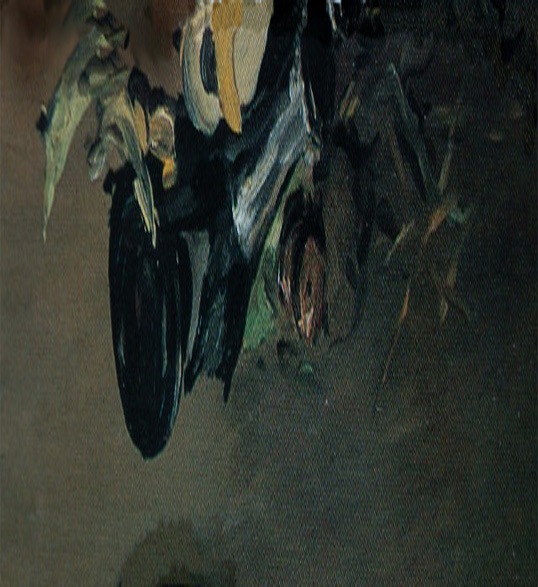July 26, 2003
Rocket ship

I'm still looking at the RagPicker. This time, with the proportions changed to the 48x44 of the panels I've prepared. So far, so good.
Concepts.
I think perhaps I should write a little something about ideas, artwork and getting started.
I substituted the architecture undergraduate experience for the art undergraduate one. So I guess it should be of no surprise that I think of words like "concept" and "conceptual" the way architects do. In art school, concepts meant ideas, in general. In architecture, a concept is a tool to achieve an objective. Utilitarian, in other words.
When I taught architecture studio, I would try to get the students to enlarge how they thought about concepts. I would begin with this definition of a concept as an idea which is used as a tool to achieve an objective. But what is an idea?
Then we would empty out the categories of mental contents from primitive to complex: notions, ideas, concepts, theories... (ok, you can throw in emotional feelings, sensations, ideologies, dreams, whims, urges... but I was leading them somewhere!).
Notions are the thoughts that sweep over you as you sweep over the world. They are thoughts uncomplicated, simple, unstructured. For example a thought of what good is as something favorable, positive or nurturing; and conversely a notion of bad is that which is undesireable, counterproductive, hurtful.
An idea is a structured complication of one or more notions in combination. For example, the idea: "evil is the good that's gone wrong" (please note, I am skeptical of this idea today... and it wasn't well thought out when I used it then.... it was a tool, too). Then I would show them how you could use this idea as a tool in thier designs to channel thier actions, the conceptual. By correlating notions and ideas to features in thier designs, the conceptualization would orchestrate their relationships. The design would have an orientation, a "point of view".
But once they had a handle on this, I wanted to make sure they wouldn't over rely on it either. So I would trott out a simile: An architectural design is like a rocket ship: When it blasts off the pad, the engines are the conceptual, lifting the design process off the ground. As it progresses into space, each engine stage is cast off until they get progressively smaller. Finally, all is left of the conceptual are the tiny retro rockets that keep the payload on track. And what is the payload? The lived architectural experience, of course.
The concept is a tool. It's value serves a larger purpose. In architectural design as in the tools I'm using to get this painting off the ground. Manet is my rocket ship. The payload here is the lived experience of painting.
Posted by Dennis at July 26, 2003 7:24 PM
Leave a comment